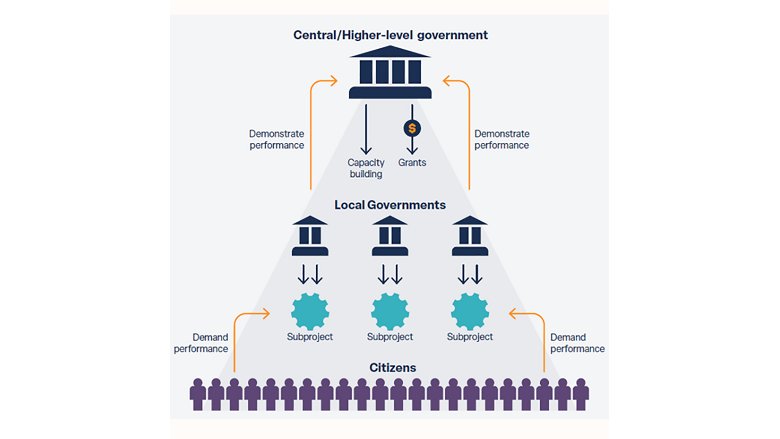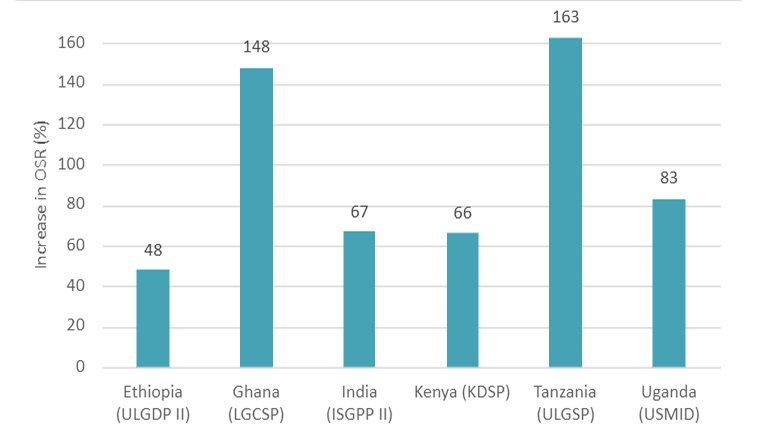Overview
When planned and managed well, urbanization contributes to economic growth and poverty alleviation, as well as to climate change mitigation and adaptation. The world is rapidly urbanizing and in the near future most people will live in urban areas such as cities and towns. Some 56 percent of the world’s population – or about 4.4 billion inhabitants – live in urban areas today. By 2050, this number will double, with nearly 7 out of 10 people in the world calling cities and towns their home. The ability of cities to deliver infrastructure and services effectively, and to manage built environments and local economies productively, depends on their institutional capabilities, the quality of local governance, and the financial and other resources at their disposal.
Across the developing world, substantial deficits in these areas hamper well-managed, inclusive, and resilient urban development. Thus, a core priority for cities in developing countries is to strengthen the financing and institutional systems which underpin effective city planning and management as well as urban infrastructure investment and service delivery. The World Bank, its client countries, and other development partners, have long recognized this critical challenge and placed it at the center of their urban development activities.
World Bank Strategy
One key instrument the World Bank has utilized to meet this challenge is performance-based fiscal transfers to cities and municipalities, a type of financing mechanism designed to improve their institutional and service delivery performance through a set of financial incentives combined with capacity-building support activities. Generally known as Urban Performance Grants (UPGs), these are fiscal transfers from a higher level of government (for example, the central government or -- in the case of federal countries -- state and provincial governments) to cities and other local governments conditioned on achieving performance in predetermined areas. Cities use these additional funds to invest in infrastructure and service delivery requirements that fall within their mandate.
The World Bank has established an extensive portfolio of UPG programs around the world over the past two decades. The Bank’s Global Practice for Urban, Disaster Risk Management, Resilience, and Land has overseen over $ 8 billion in World Bank-approved financing for such programs in this period, covering a few thousand local governments across sub-Saharan Africa, South and East Asia, and the Middle East and North Africa regions. Eighteen such programs are currently under implementation, with several more in various stages of preparation. Other Global Practices of the World Bank, including the Governance Global Practice, and the Social Sustainability and Inclusion (SSI) Global Practice, also support similar performance-based grant programs, further highlighting the suitability of this modality to support development objectives at the local level. UPG programs are also supported by other development partner organizations through financial and analytical aid, such as the United Nations Capital Development Fund (UNCDF), which has been financing such programs since the 1990s, as well as the European Union, UNDP, OECD, and several sector-specific programs within high-income countries targeted to their local governments.
Urban Performance Grants programs generally have the following key design features (also see Figure 1 for a typical structure for UPG programs):
- They use performance-based grant financing to provide incentives to cities and local governments to improve their institutional performance and service delivery outcomes in their jurisdictions.
- They rely on a robust, credible, and transparent common performance assessment system to evaluate local government performance, with the results of these assessments determining fiscal transfer (grant) allocations.
- Capacity building support is provided by the higher tier of government to the participating cities and local governments to achieve the required performance criteria and improve their systems.
These programs generally cover multiple cities and municipalities. In some cases, peri-urban and rural local governments can also be included in the program, depending on program objectives and the local political, administrative, and institutional context.
Figure 1: Stylized Typical Structure of Urban Performance Grant Programs
UPG programs represent a sizeable share of the World Bank’s urban development financing portfolio. Between FY 2013-2020, these programs accounted for 41 percent of the urban sector portfolio in financing volume, amounting to over $5 billion in total. The average World Bank financing for a UPG program is $275 million, over twice as high as the average financing for other urban development projects.


